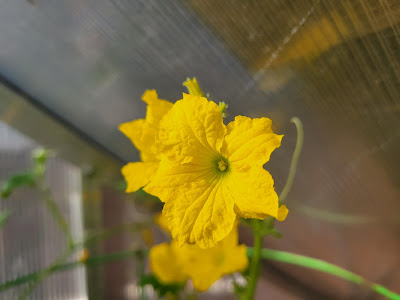What can I say about the Xylangouro? I watched a video once that touted it as better than the regular Armenian cucumber. While this may be true, I’m not too impressed with this Greek landrace variety. It did alright in the greenhouse for me, but the flowers were all different and the shape of the fruit was a bit irregular.
Despite being sold by a well-known company, I’m not sure if I will be growing the Xylangouro to offer to others for a while. Why is that, you ask? The texture of the fruit that I tried, along with the variable flower type tells me that this is a variety that promises more work than reward. Though it may sound selfish, I prefer to grow the more promising varieties first and save the less rewarding varieties until later. Over time I usually get around to the others.

























































